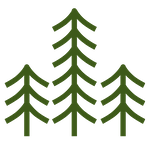What is Overlanding
Overlanding is the hobby of self-reliant travel by vehicle, on-road and off-road, to remote destinations. Much like a road trip, the overlanding journey is half of the fun.
It is an experience, an enjoyment of a journey to remote or underexplored regions via vehicles, both on and off road, for an extended period of time. Self reliance is highly emphasized in the overlanding culture and those who do it love the outdoors, camping, exploring, and seeing new and exciting places. While conquering obstacles and driving technical terrain is part of the experience, the focus is on the adventure, the exploration and self sufficiency.
While traditionally, overlanding is focused on longer term remote trips across cultures, many national parks should not be overlooked. There’s plenty of underexplored terrain and adventure to be had in these gems set aside for the enjoyment of the people.
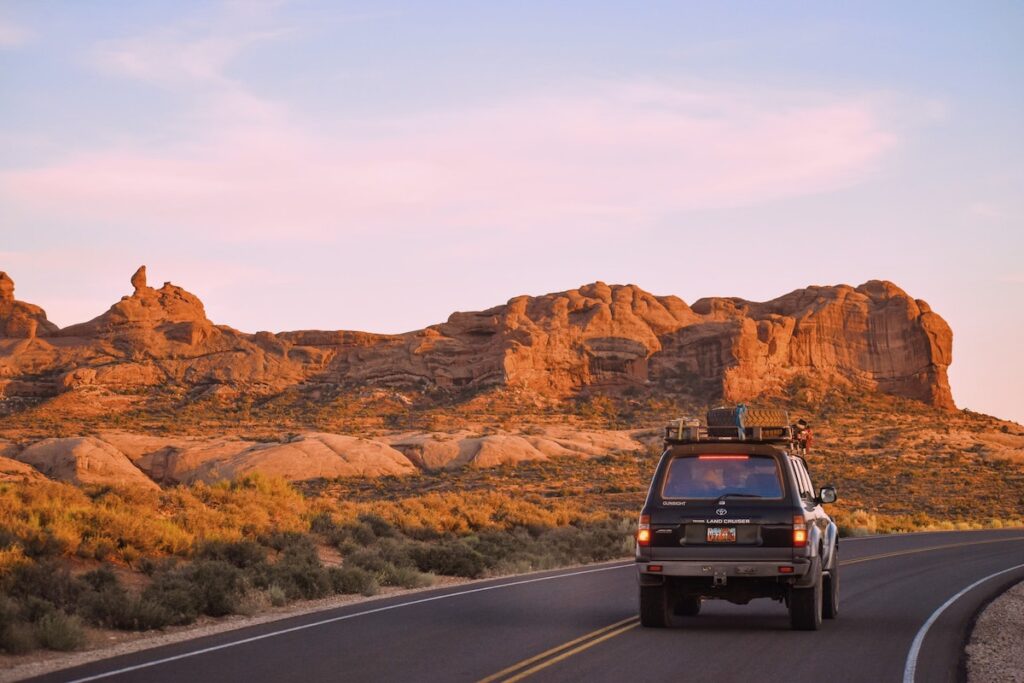
Is Overlanding Allowed in National Parks?
Yes, overlanding is allowed in national parks. There are many dirt roads and less travelled routes perfect for exploring. Going off designated trails and roads however, is not permitted.
The part that gets tricky is camping for the night. Not all parks allow dispersed camping and summer tourism of traditional campgrounds takes away from the adventure, so do your research. It’s best to be prepared and find a national forest or BLM land before nightfall if dispersed camping is not allowed.
Other Rules for Overlanding in National Parks
- ORV driving rules vary from park to park; make sure to look up each park you visit ahead of time.
- Also double check state and federal ORV rules
- Make sure to know and stay on designated trails and ORV roads
- Be ready to have your overlanding vehicle inspected by rangers for safety
- More details
Before You Head Out Overlanding
As overlanding is focused on remote destinations, often traveling on unpaved and 4×4 roads, there is inherently a non-trivial degree of risk and danger (but it wouldn’t be fun otherwise). Given this, it is important to diligently plan routes, stick to official roads and trails, bring adequate supplies and tools, travel with a group (especially for beginners), and use common sense and good judgement.
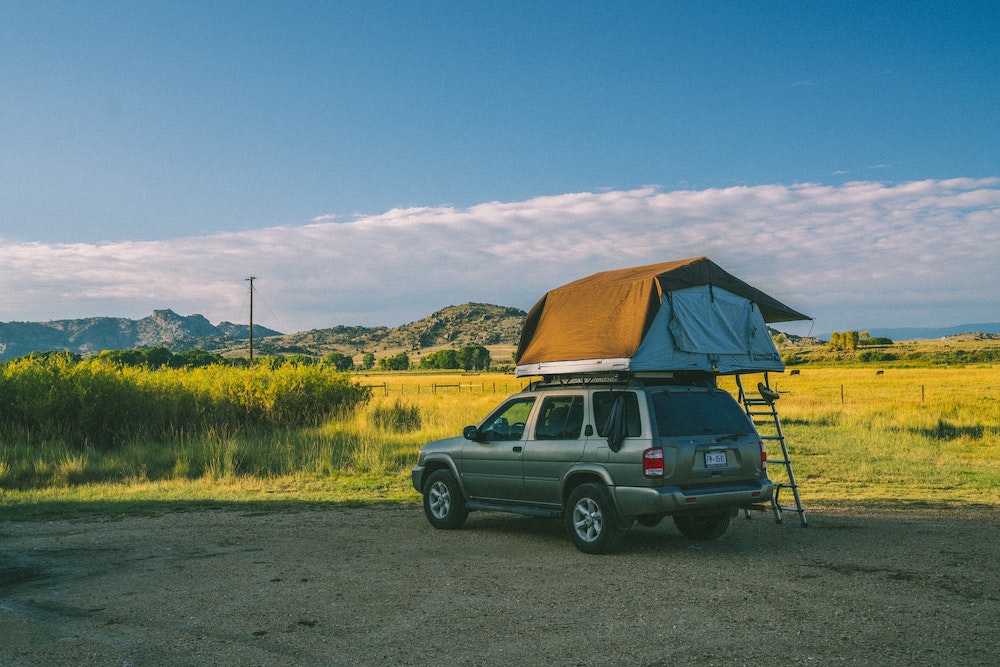
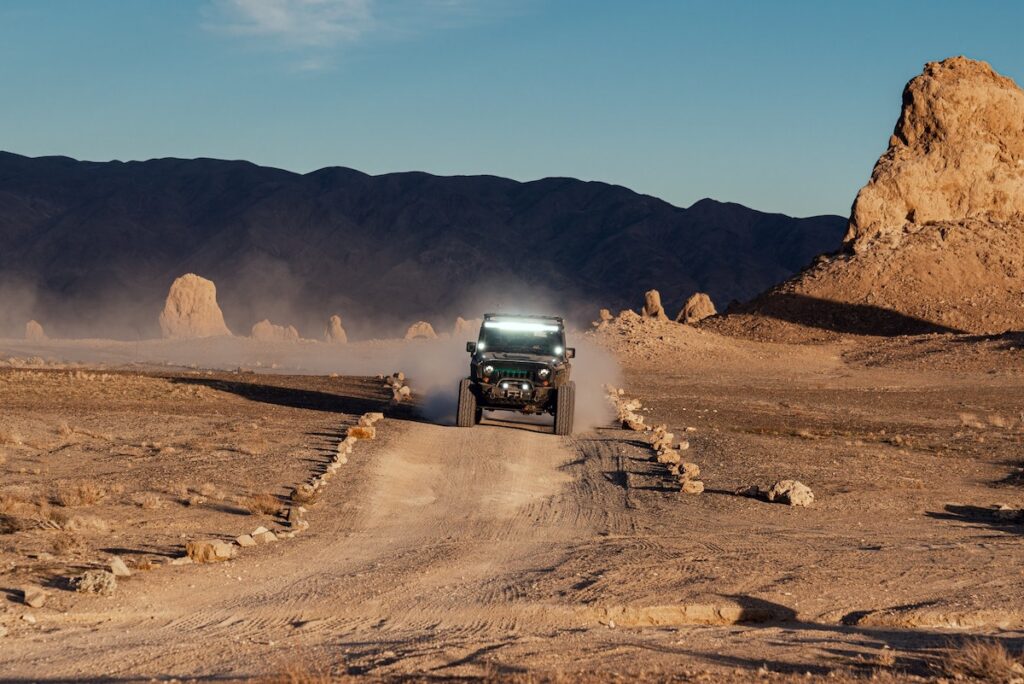
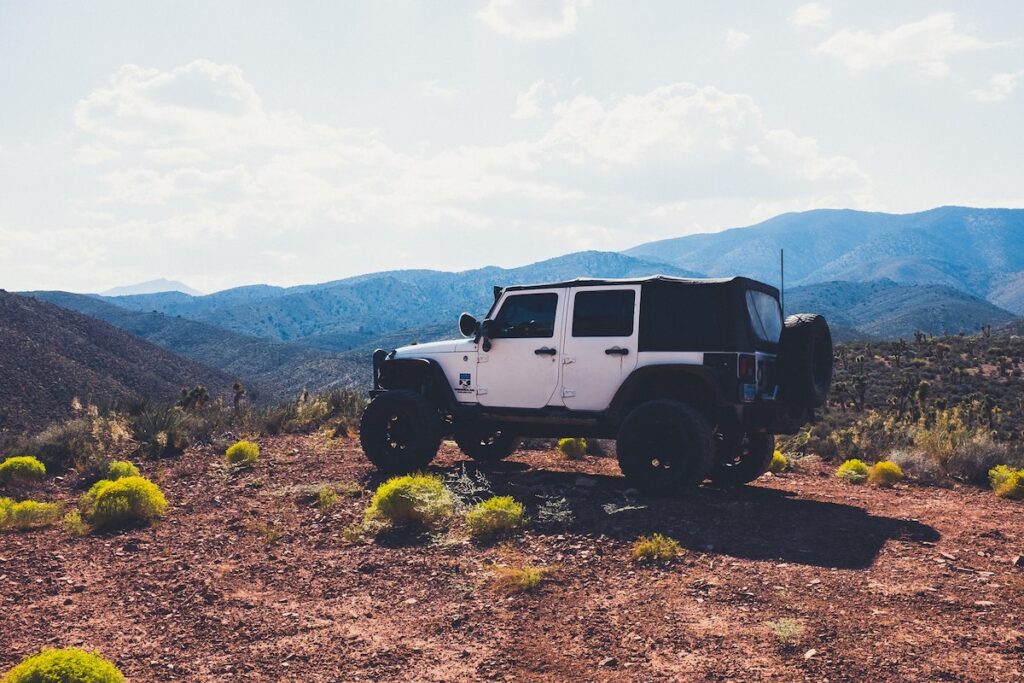
The gear you should have for a succesful and safe overlanding excursion has been covered throughly by other great sites so we won’t rehash, but here are some great guides:
Overlanding Gear Resources
Overlanding Tips
What are the Best Parks for Overlanding?
With 62 National Parks in the U.S., there are many great options for overlanding. These are our 6 favorite parks to set your own course and explore. Please help protect our National Parks by following all rules and being responsible.
Death Valley
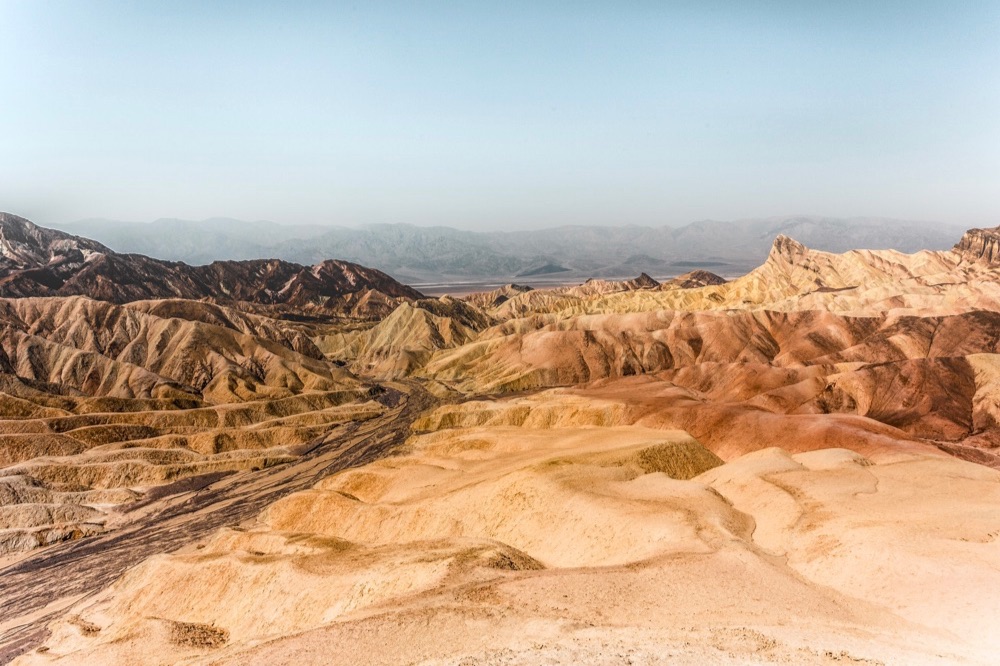
Death Valley offers a wide range of trails with good beginner routes. The park is also one of few that allows for dispersed camping (within guidelines).
The largest national park outside of Alaska, Death Valley offers over one thousand miles of backcountry roads. The scenery changes dramatically. There are three mountain ranges in the park and valleys that dip 280 feet below sea level. Mineral deposits change the color of the landscape from red to yellow to white. There’s hot springs, salt flats, waterfalls and sand dunes, all of which can be visited in the same day. See abandoned homes and towns from previous mining operations and watch the scenery change from sand dunes to green sagebrush to rocky canyons or take some of the technical rocky routes.
Dispersed camping and car camping is allowed in Death Valley, but it’s requested that you fill out a backcountry form prior to heading out.
Death Valley National Park Overlanding Resources
Big Bend
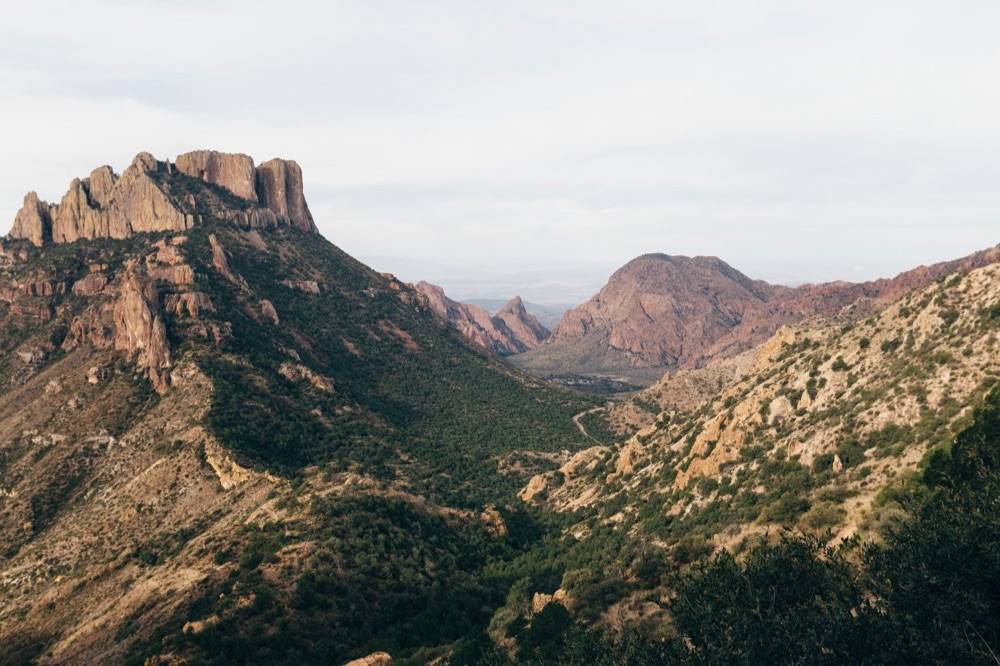
While Big Bend National Park does not offer dispersed camping, they have several maintained dirt roads which are great for beginners to go out and explore.
Spanning 800,000 acres, Big Bend National Park in Texas is well known for its backcountry routes that offer a chance to see terrain that most of the general public will never venture to. With a unique territory that includes parched desert, lush rivers, tall mesas, and over 6000 feet in elevation change, Big Bend has a lot to see to explore. Visit the hot springs or take a chance on the challenging Black Gap road, even better – take the rowboat across the Mexican border (don’t forget cash and your passport) to Boquillos del Carmen for authentic tacos.
Overall, Big Bend is great for beginning overlanders with most trails being pretty easy. Camping is allowed in approved spaces (though there’s plentiful primitive sites), so plan your trip before you go.
Big Bend National Park Overlanding Resources
- Maintained Dirt Roads
- Primitive Dirt Roads for high clearance vehicles
- List of available primitive campsites
Joshua Tree
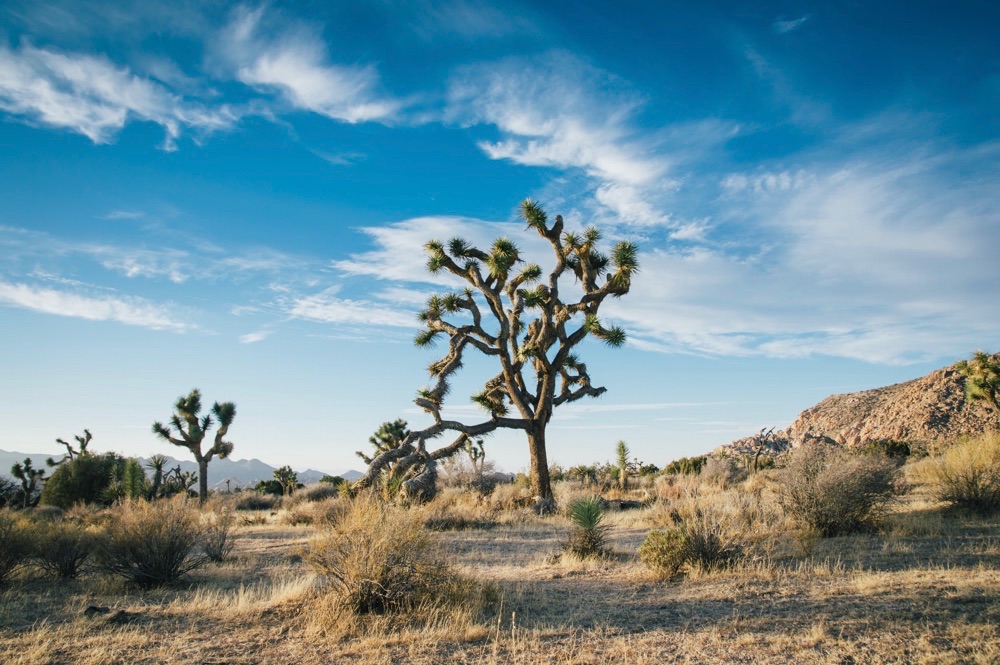
Joshua tree offers several different backcountry roads with varying degrees of difficulty making the park a great choice for beginners as well as experienced overlanders.
Straddling the transition zone between the Mojave and Sonoran desert, Joshua tree offers many routes, both long and short. Popular for photographers, rock climbers, and hiking, the park is best seen in spring or fall, before it gets blazing hot in the summer. Winter, while beautiful, has higher potential for flash flooding or even snow in some areas. The Mojave zone of the park is most popular and is where you’ll find the giant boulders and Joshua trees the park is known for.
Learn about some of the history of the park, like the Black Eagle Mine Trail or see the Geology Tour road to learn about the geological and anthropological stops and hopefully see some petroglyphs and a gorgeous panoramic view near the end of the trail.
The park is highly accessible from several major cities in California and only allows camping in designated areas, but dispersed camping is allowed on BLM land just outside the park.
Joshua Tree National Park Overlanding Resources
Arches
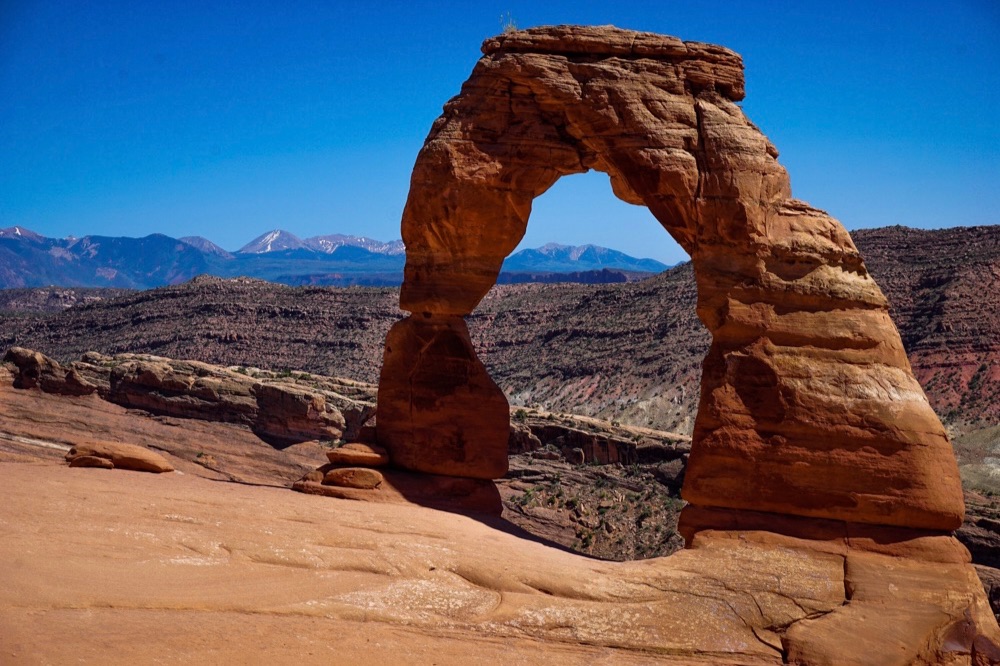
Arches National Park offers 3 different 4×4 roads and 2 unpaved dirt roads which connect to trails outside the park offering great beginner level overlanding experiences.
Visiting Arches National Park is nothing short of spectacular in any sense. There are few trails suitable for overlanding in the park. Salt Flat Road, that will take you away from the crowds and allow you to explore Arches on your own terms. It takes about 4 hours to travel the road and passes a park boundary towards Moab. Camping in Arches is very busy, so it’s probably best to find a primitive spot outside of the park in Moab. Willow Springs is another remote road that takes you near some dinosaur tracks in hardened sandstone. It’s recommended that you drive this route North to South due to the deep sand.
Salt Flat Road allows you to take a trail that most Arches visitors won’t see. The trail winds up to Tower Arch, a fantastically large sandstone tower. Watch the weather, the deep sand is impassable after rains.
Arches National Park Overlanding Resources
Canyonlands
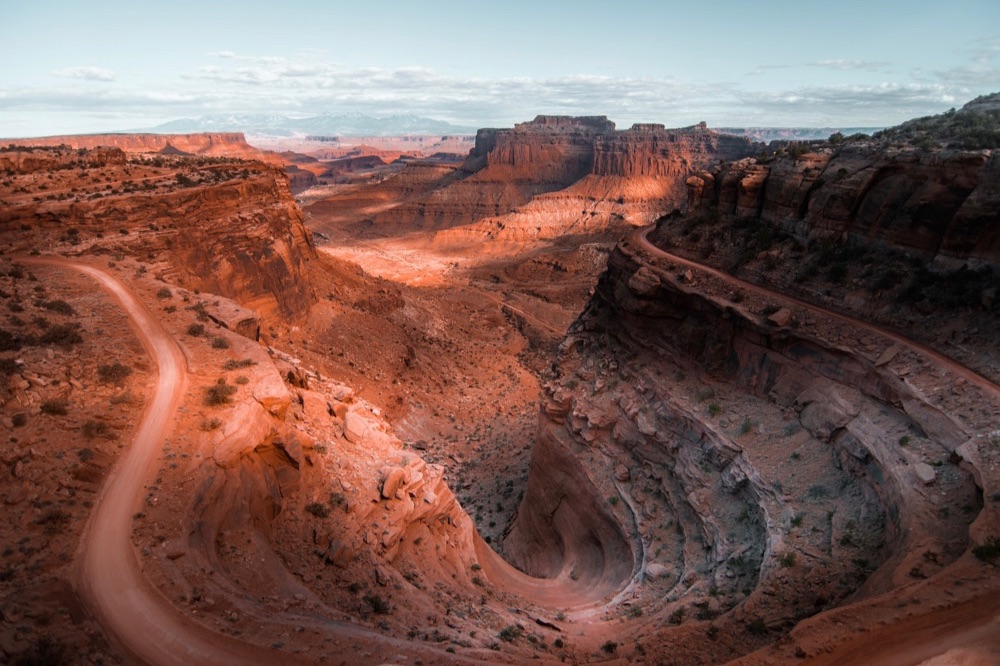
Canyonlands offers 100’s of miles across many unpaved roads – most of which require 4×4 and clearance. Unlike many other national parks, Canyonlands off-roading primarily ranges from intermediate to advanced difficulty and is less suitable for beginners, but offers incredible camping, hiking, and view access.
At four times the size of Arches, Canyonlands offers a multitude of possibilities and skill levels for overlanding. Many of the roads are highly technical and require permits before embarking, so be sure that you are confident of your skill level before setting out. Most of the trails are long enough that you’ll need several days and an overnight permit to camp. There are plenty of campsites along the way and the NPS site has a handy chart for the mileage to get to each one.
Canyonlands National Park is divided into three districts by the Green River and Colorado River. In the Island in the Sky district, a highly popular route, White Rim Road loops around the Island in the Sky mesa and has gorgeous panoramic views of the area. The route is 100 miles and trips usually take two to three days. There’s little shade, no fuel, and no water but it’s still a bucket list route.
The Needles District has about 50 miles of challenging roads, including the infamous Elephant Hill Road, one of the most difficult technical roads in Utah. Other roads in this district lead to river views, canyon bottoms, prehistoric rock art and other awe-inspiring views.
The Maze District roads are very difficult and remote. The NPS site recommends that inexperienced drivers refrain from trying the routes in the Maze district. Because of the isolation and challenging roads, drivers should be self sufficient and prepared for self-rescue. Campsites must be reserved in advance. Despite all the warnings, it’s a beautiful place and perfect for the advanced overlander who wants to get away.
Canyonlands National Park Overlanding Resources
Grand Canyon
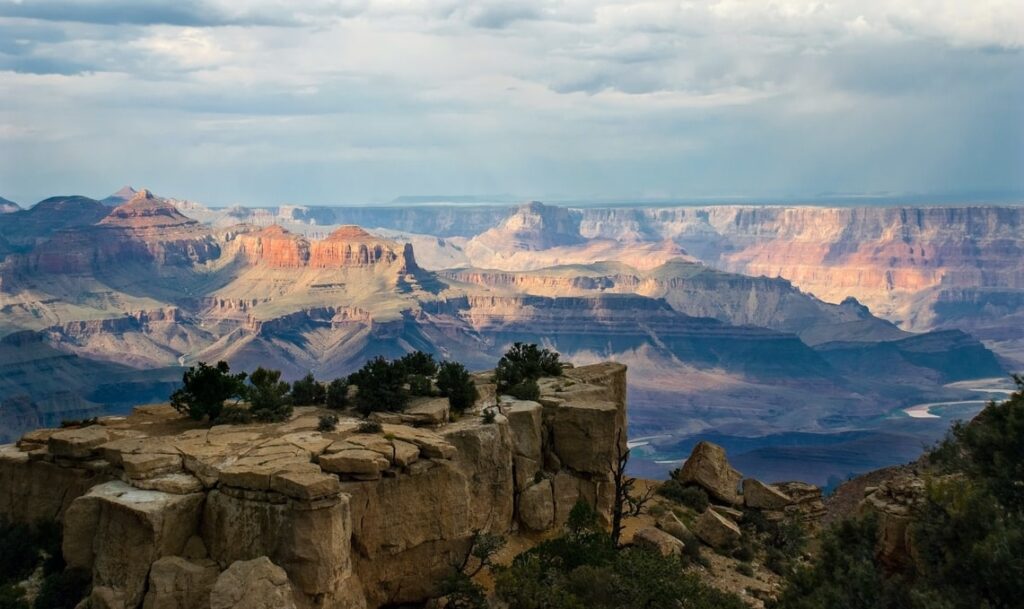
The Grand Canyon National Park offers 1 unpaved road and 1 4×4 road, both on the North Rim, for overlanding. While the in-park options are limited there are many options adjacent to the park worth exploring.
The North Rim is filled with Ponderosa pines, aspens, elk, bison and remote meadows – quite the opposite of the traditional desert photos of the Grand Canyon. It’s also much quieter than the South Rim.
Because of the high elevation and snow closures, the season is only May – October. Depending on how long you want to spend in this gorgeous place, your offroad adventure might also take you through the Kaibab National Forest, Grand Canyon National Park, and the Grand Canyon-Parashant National Monument. Check with the Grand Canyon National Park for backcountry permits before camping. Kaibab NF and Parashant allow backcountry and dispersed camping. See the link below for an example to a weeklong overlanding trip including maps and plenty of gorgeous photos.
Grand Canyon National Park Overlanding Resources
